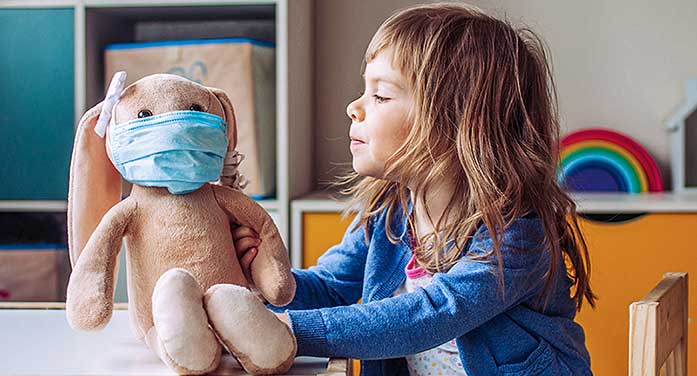If you’re the parent or caregiver of a toddler or preschooler, you might be wondering how the past 16 months of relative isolation has affected them.
For many kids, the pandemic shut down their opportunities to interact with peers and increased their screen time. It has also disrupted family routines, increased anxiety among many caregivers and children, and forced everyone to adapt to a lot of change.
But the news is better than you might think when it comes to the social development of youngsters.
“For infants and toddlers, their caregivers are the most important socializers,” says Wendy Hoglund, associate professor of psychology at the University of Alberta. One benefit for some families is that they’ve had more face-to-face time during the pandemic as daycares and schools were shut down, activities were cancelled, and many parents started working from home.
As restrictions lift and kids start to navigate the realm of playgrounds, swimming pools and – dare we hope – indoor playdates, they’ll be experiencing a lot of firsts. And they’ll be looking to their BFFs (that’s you, parents) for cues on how to handle the changes. Hoglund has some advice to help you support your tot and look after yourself as you reintegrate into the world.
Take care of yourself
Parents have a major role in ensuring that children feel supported as they venture into unknown territory. “When caregivers are more stressed and anxious about the pandemic, young children will read those behaviours and those emotions,” she says.
Looking after your own well-being and modelling a positive outlook will help lower stress in your children and help them feel more confident adapting to new norms.
Help your child find their voice
For some young children, they’ll be exposed to other kids and adults for the first time. Don’t be surprised if they stand at the edge of the swimming pool for a while before jumping in. Before venturing out into a new environment, Hoglund recommends talking to your kids about how they’re feeling.
“Even preschoolers are capable of having a conversation about things they might be excited or scared about,” she says. Teaching kids to label emotions helps them learn how to manage their feelings. Once you know what they’re worried about, you are better equipped to support them. For example, if they’re nervous about meeting new people, you can give them tips on how to introduce themselves to a peer.
Make a plan
If you’re nervous about going to a big public place – like a mall – think ahead. Consider what stores you might visit or who you might encounter. Talk to your kids about hand washing and sanitizing and whether or not they’ll be wearing a mask.
“Parents are already really good at doing those basic things with their children,” Hoglund says. For their part, most kids have learned these behaviours well over the past many months.
Prepare for separation anxiety
Hoglund expects most kids will acclimate well to meeting new people – it’s leaving the familiar ones that might cause more trouble. Pandemic or not, she says, “separation anxiety is typically one of the concerns that more children struggle with in those toddler-to-preschool years.” For some youngsters, spending close to a year and a half with little to no contact with anyone aside from caregivers may ramp up the separation anxiety.
To help reduce this, Hoglund recommends starting conversations about the changes early. If your tot is off to preschool or daycare in the near future, organize pre-visits to familiarize them with the people and space.
She also suggests preparing them for time apart by spending short, increasing amounts of time away from you. If they’re very reluctant to separate, you can even start by sitting outside for a few minutes while your child, accompanied by another adult or older sibling, watches from the window.
Channel your inner tortoise
Reintegrating is going to be a process for kids and adults alike. But the pace is up to you. If the thought of taking your little person to a movie theatre makes you break out in a cold sweat, set your step-count goal back a few strides. Start with a backyard playdate with a family you know and trust, says Hoglund. Whatever feels most comfortable.
You can help hesitant kids warm up to public spaces like playgrounds by joining in the fun until they’re ready to explore on their own or play with other kids.
Take a breath – it’s going to be OK
“Children are incredibly resilient,” Hogland says.
Even if it takes your toddler or preschooler several interactions to feel at home with others, they’ll come around. The security, warmth and comfort you provide as a caregiver will help children adapt well to the coming changes.
Be patient with them – and yourself – and let everyone re-enter at their own speed.
| By Lisa Szabo
This article was submitted by the University of Alberta’s Folio online magazine. The University of Alberta is a Troy Media Editorial Content Provider Partner.
© Troy Media
Troy Media is an editorial content provider to media outlets and its own hosted community news outlets across Canada.



